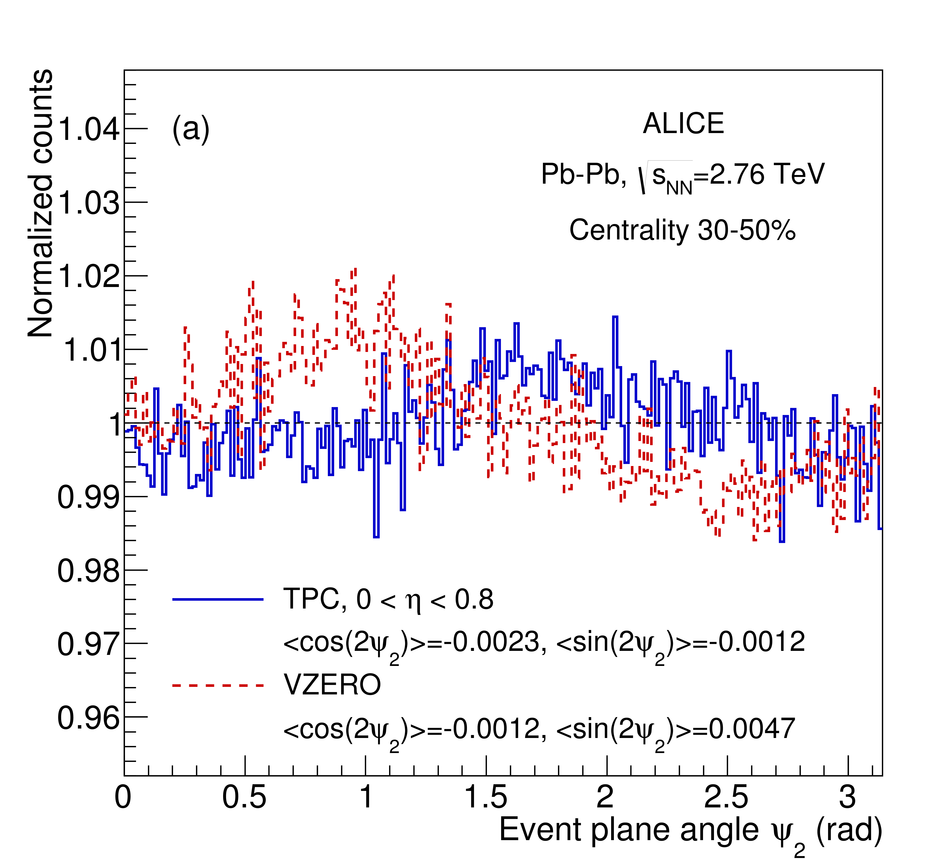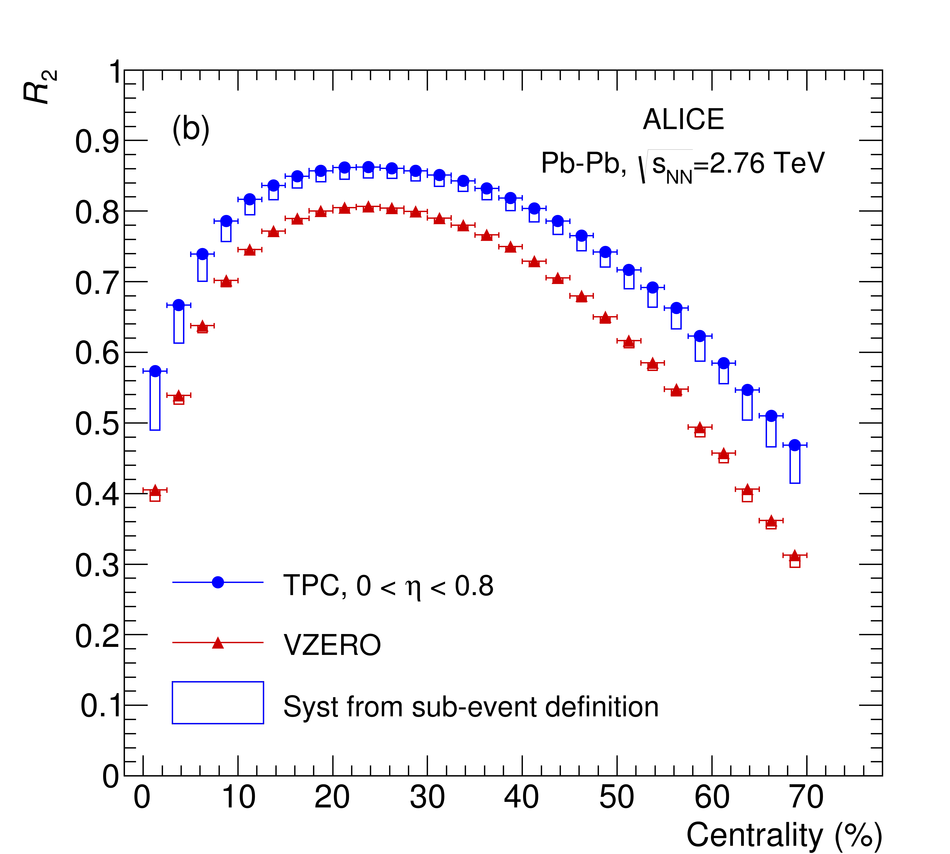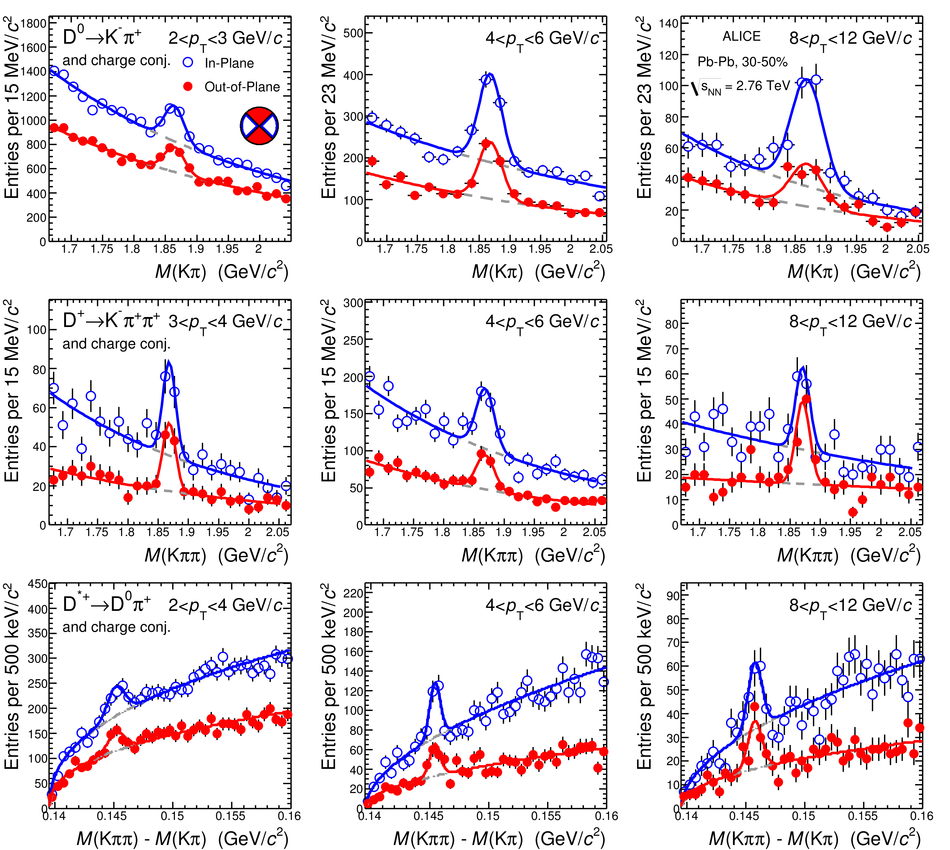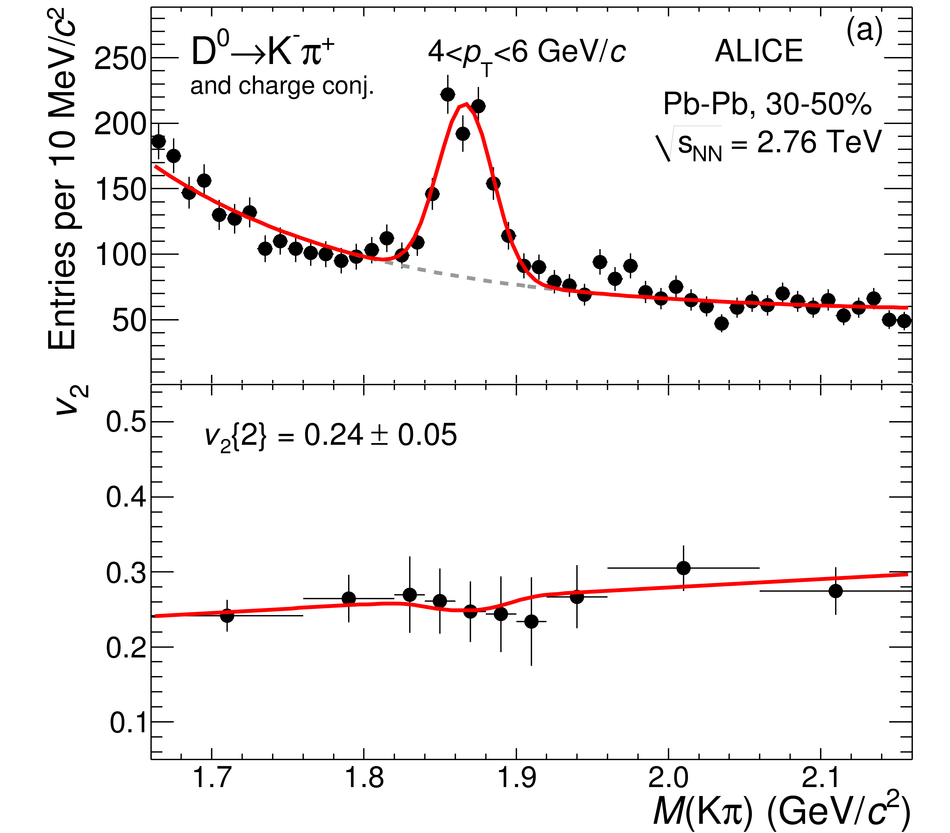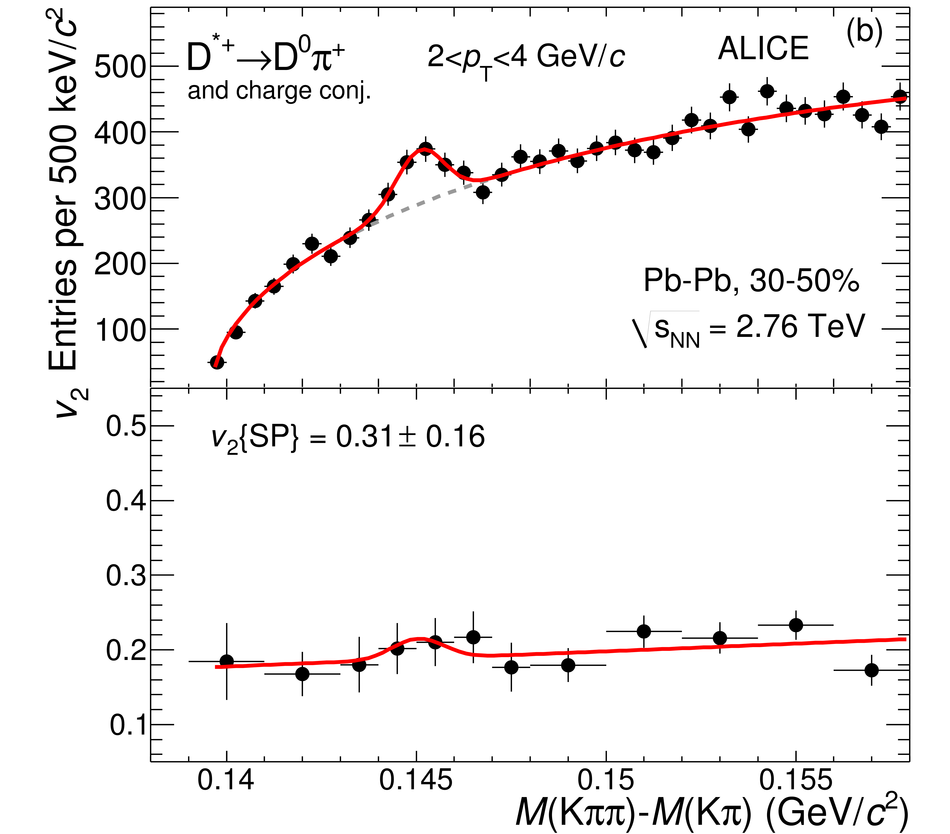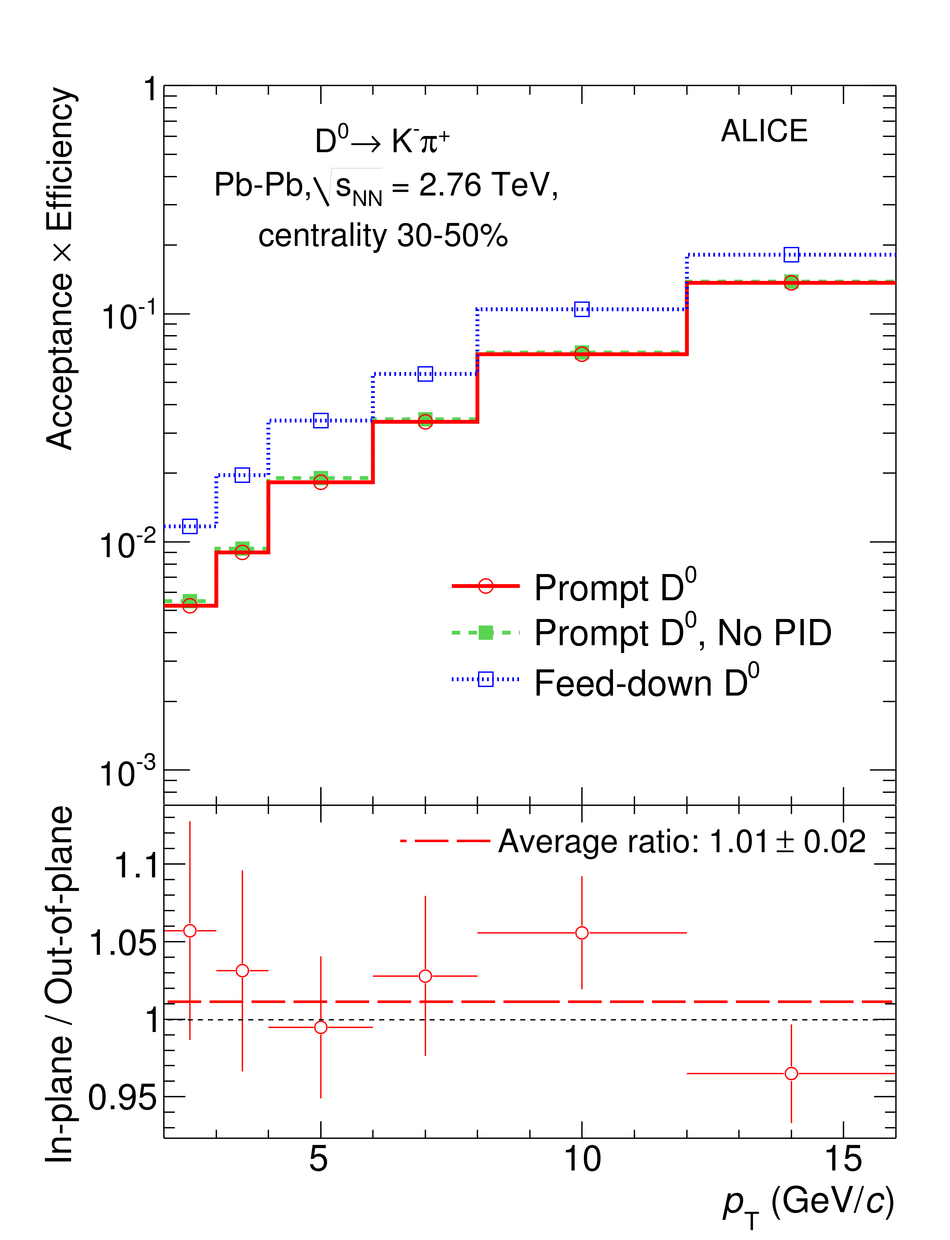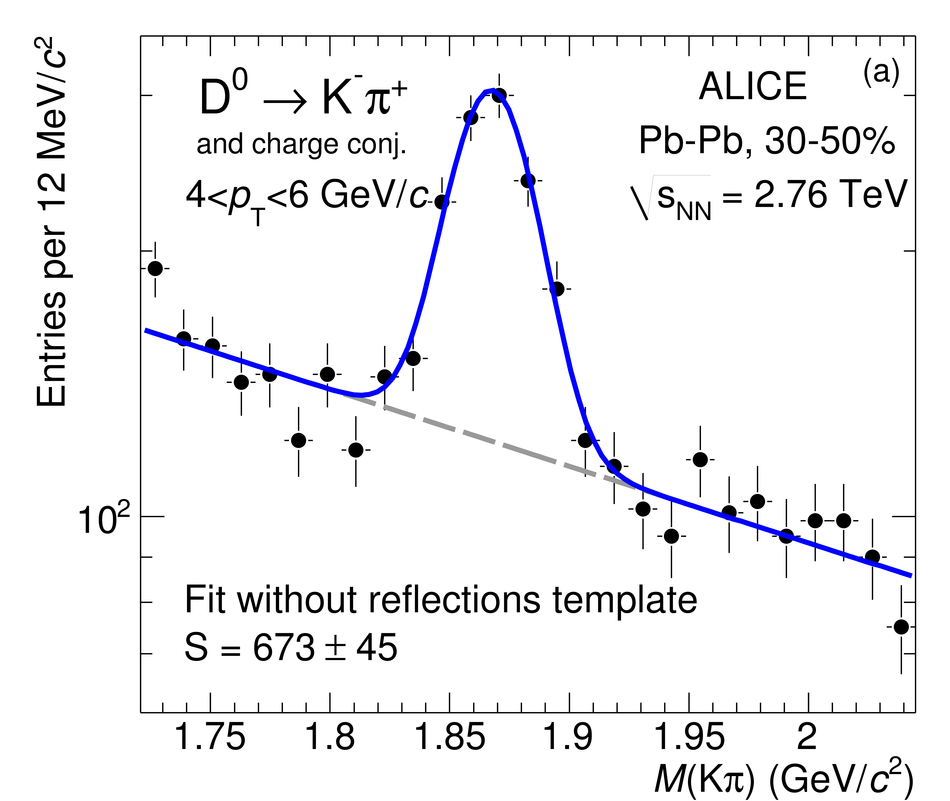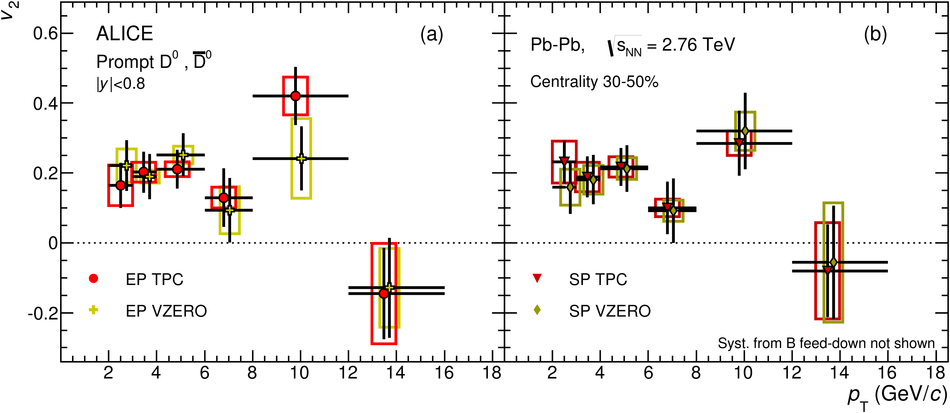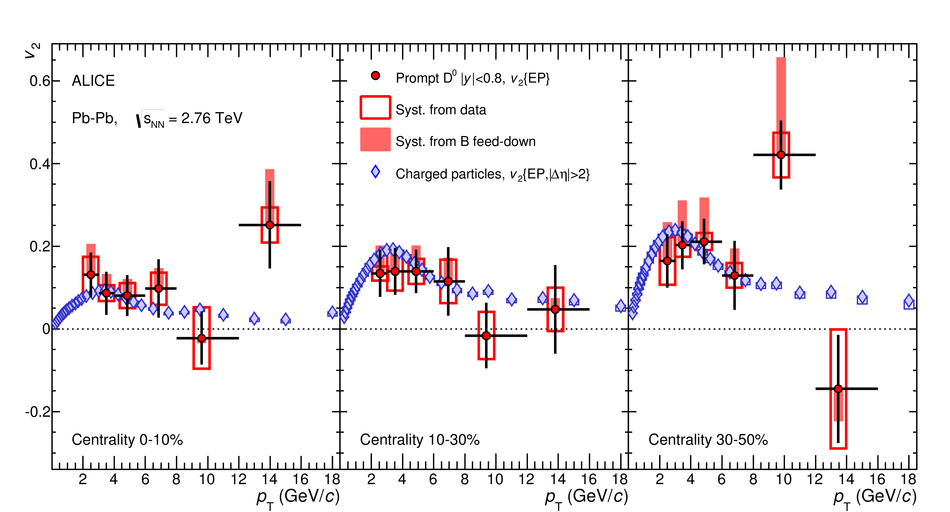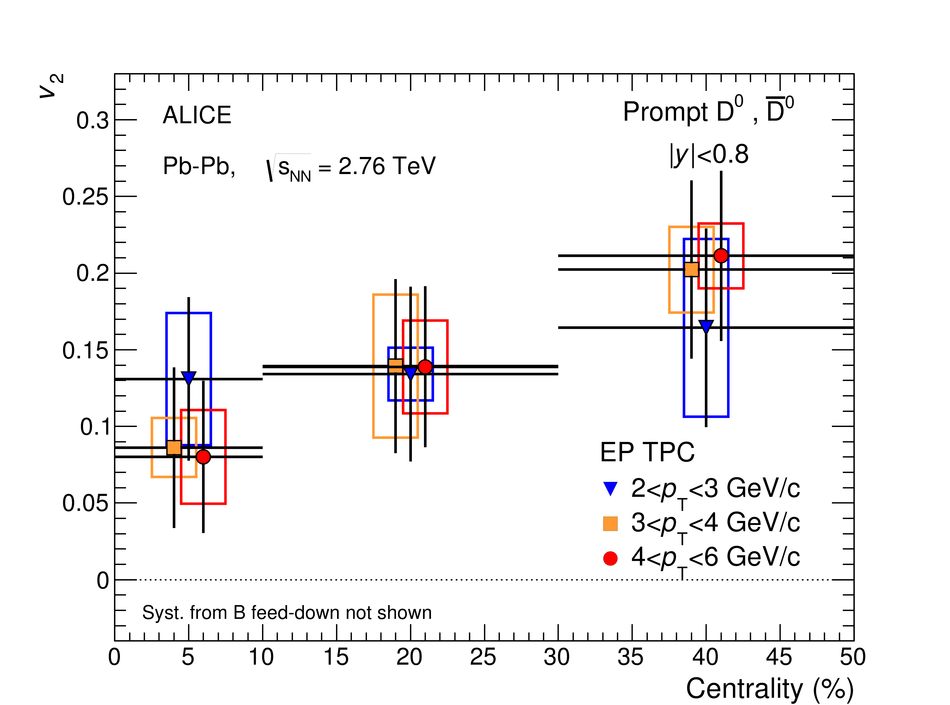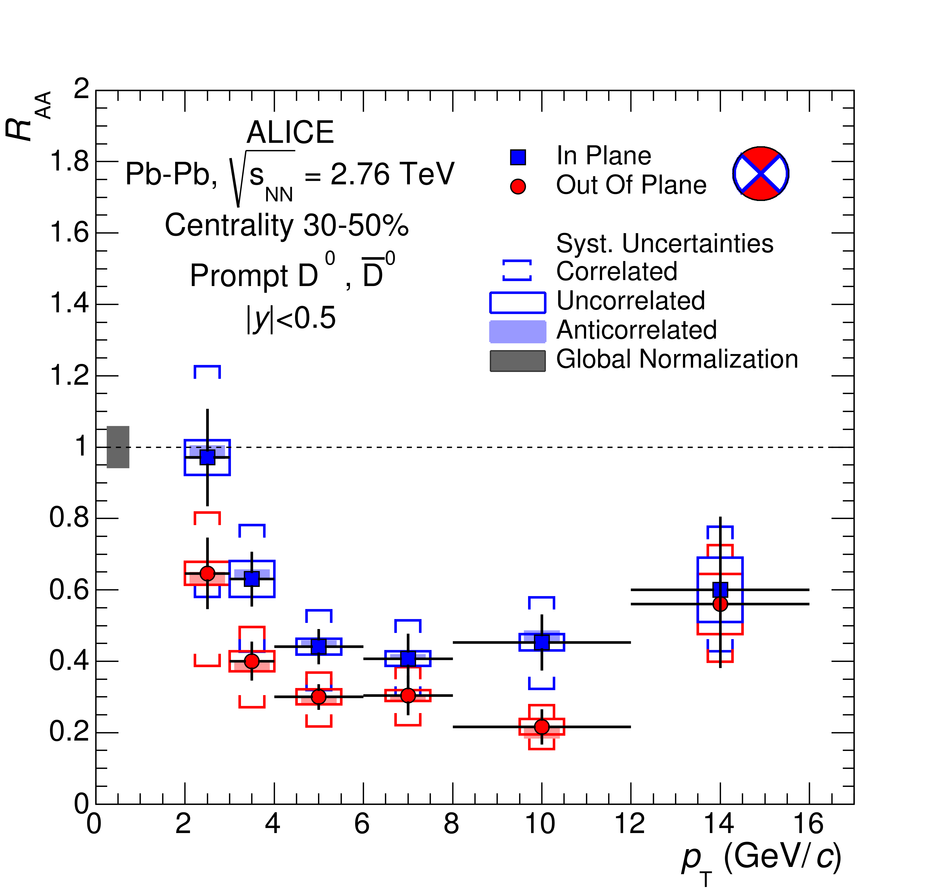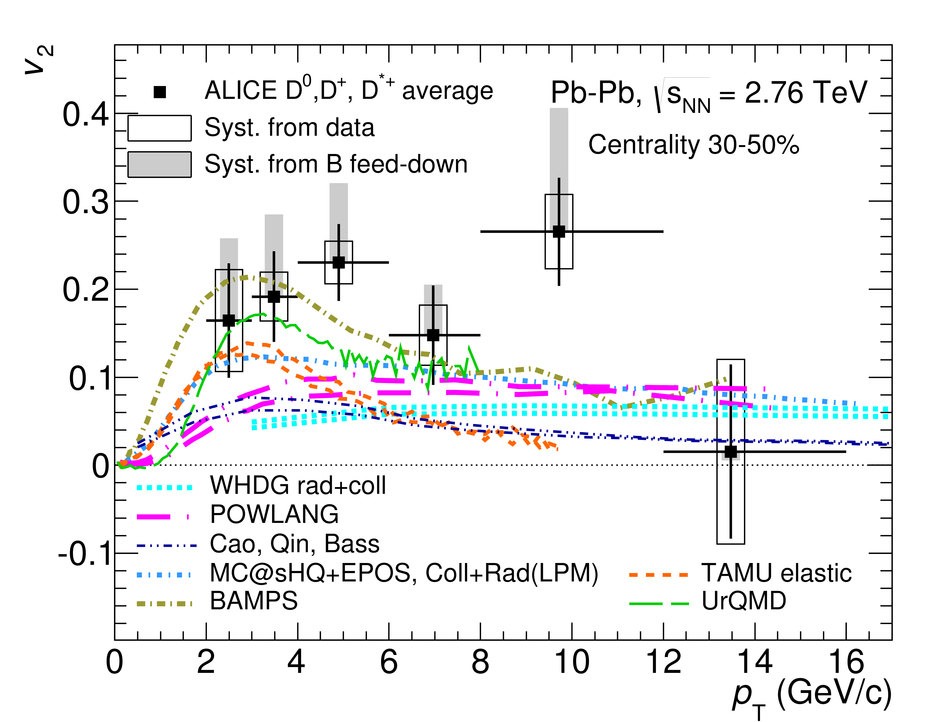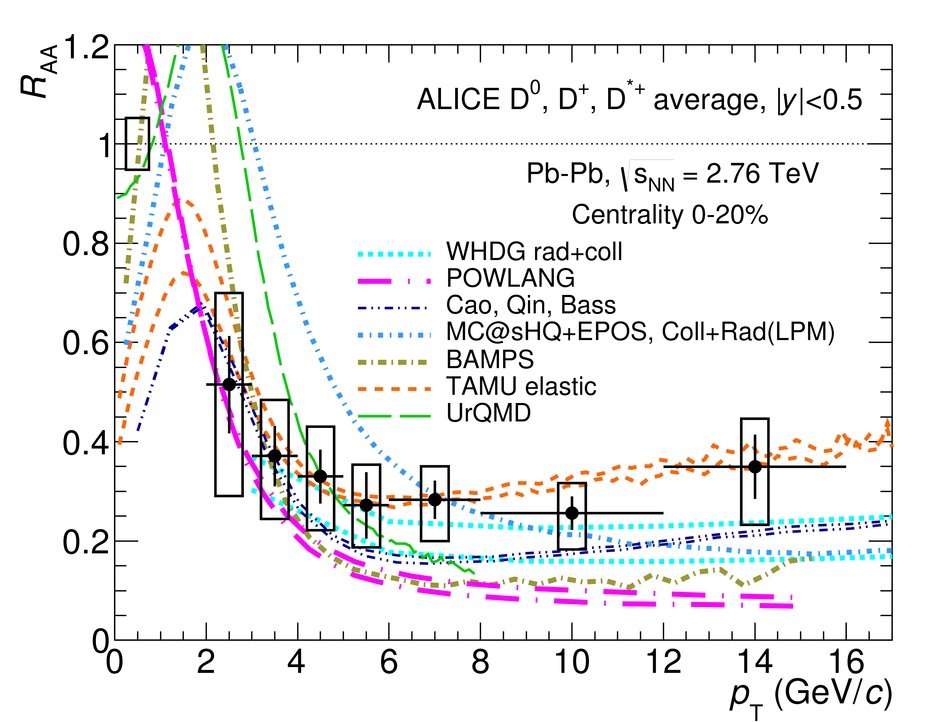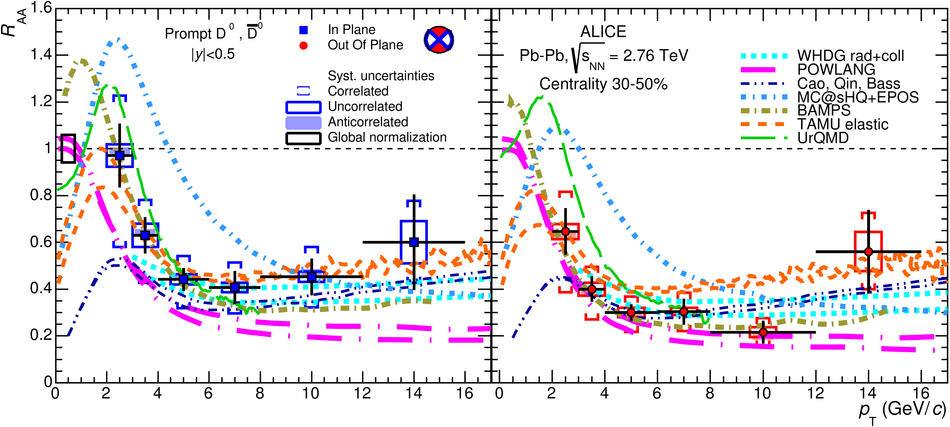The production of the prompt charmed mesons $D^0$, $D^+$ and $D^{*+}$ relative to the reaction plane was measured in Pb-Pb collisions at a centre-of-mass energy per nucleon-nucleon collision of $\sqrt{s_{\rm NN}} = 2.76$ TeV with the ALICE detector at the LHC. D mesons were reconstructed via their hadronic decays at central rapidity in the transverse momentum ($p_{\rm T}$) interval of 2-16 GeV/$c$. The azimuthal anisotropy is quantified in terms of the second coefficient $v_2$ in a Fourier expansion of the D meson azimuthal distribution, and in terms of the nuclear modification factor $R_{\rm AA}$, measured in the direction of the reaction plane and orthogonal to it. The $v_2$ coefficient was measured with three different methods and in three centrality classes in the interval 0-50%. A positive $v_2$ is observed in mid-central collisions (30-50% centrality class), with an mean value of $0.204_{-0.036}^{+0.099}$ (tot.unc.) in the interval $2 < p_{\rm T} < 6$ GeV/$c$, which decreases towards more central collisions (10-30% and 0-10% classes). The positive $v_2$ is also reflected in the nuclear modification factor, which shows a stronger suppression in the direction orthogonal to the reaction plane for mid-central collisions. The measurements are compared to theoretical calculations of charm quark transport and energy loss in high-density strongly-interacting matter at high temperature. The models that include substantial elastic interactions with an expanding medium provide a good description of the observed anisotropy. However, they are challenged to simultaneously describe the strong suppression of high-$p_{\rm T}$ yield of D mesons in central collisions and their azimuthal anisotropy in non-central collisions.
Phys. Rev. C 90 (2014) 034904
HEP Data
e-Print: arXiv:1405.2001 | PDF | inSPIRE
CERN-PH-EP-2014-083

